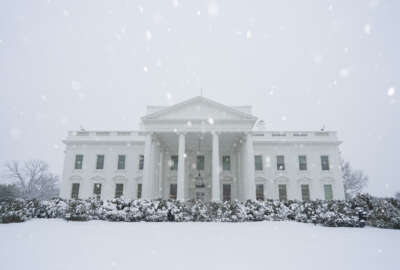What happened to all of the young federal employees?
The lack of 30-and-under talent in the federal workforce means agencies will be facing significant shortfalls in the future, says Jeff Neal, former chief human...
Commentary by Jeff Neal
Founder of ChiefHRO.com
& Senior Vice President, ICF International
This column was originally published on Jeff Neal’s blog, ChiefHRO.com, and was republished here with permission from the author.

In 2009, there were 233,759 federal employees under age 30 – now there are 176,533. In 2009, there were 224,775 employees age 60 and over. Now there are more than 268,000 and the number is growing. What happened? Why is the workforce getting older? Should we even care? After all, older employees are often more experienced, more stable in their careers, and likely to continue to work for a number of years.
The problem the government is facing is that the number of younger employees is a good indicator of the talent the government will have available for critical mid-career jobs in the next 15-20 years. The lack of 30 and under talent means we will be facing significant shortfalls as current mid-career and older employees retire.
We have seen this problem before. During the Clinton administration, employees in human resources, procurement and other “control” jobs were significantly downsized. Every chief human capital officer and chief procurement officer I have talked with says they are still paying the price for those cuts. When GS-14 and GS-15 jobs are advertised, the number of high quality candidates is often inadequate. These are jobs where we used to see large numbers of excellent applications. Now a handful of good candidates is considered to be a good result.
The current workforce demographics are shifting rapidly. When we look at federal employment by age group, we see the number of under-30 employees is dropping precipitously (from 11.4 percent of the workforce to 8.5 percent) and the number of 60+ employees is growing (from 11 percent to 13 percent).
The rapid shift of the workforce profile is significant and a bit shocking. While some of the change can obviously be attributed to employees aging out of the 29 and under and 30-59 categories, but that doesn’t explain everything. Why are things changing so quickly? Are younger employees leaving faster than older ones? Is the government hiring fewer young employees?

Turnover is Not the Problem
Some of these questions are easy to answer. Publicly available data show the number of people leaving government and the numbers who are hired. What we see is interesting – the raw number of young people leaving peaked in FY 2010 at 69,656, and dropped to only 46,319 in FY 2013. The number of mid-career (age 30-59) employees and the number of older employees leaving have increased. A higher turnover rate among younger employees is to be expected.
Early in a career, more employees change jobs than they do later in their careers. In almost every occupation and in most employers, turnover is highest in the first two years of employment. What these numbers tell me is that we do not have the extreme problems with retention of younger workers that some argue we have.

Hiring is the Problem
Where we do see a clear problem is in hiring younger workers. Overall, hiring is down across the board, but hires of young people have dropped far more than those of mid-career and older workers. The number of new hires under age 30 has dropped by 54.8 percent since FY 2009, while mid-career hiring has dropped 37.2 percent and age 60+ hiring has dropped 24.4 percent.
It is clear that what is driving the number of younger employees down is not turnover, it’s hiring. The intake of younger employees has dropped so much that, even though younger employees are actually quitting less than they did five years ago, the new hires are not keeping up.

What is causing the hiring of young people to dry up? Three reasons stand out:
- First is younger applicants’ lack of interest in federal careers. In recent years we have seen pay freezes, a partial government shutdown and almost non-stop fed-bashing by the press and members of Congress. Someone just starting a career is far less likely to choose an employer where they have difficulty getting pay raises, are vilified by the press and senior government officials, and run the risk of having their income cut off suddenly because of political fights in Congress.
- Second is agencies hiring filling fewer entry level jobs because of budget cuts. An agency that can fill only a small percentage of its vacancies may elect to fill them with more experienced new employees who can be productive immediately. Until budgets stabilize, this problem is likely to persist.
- Third is the lack of effective programs for hiring recent graduates. Two of the hiring programs that target such applicants are the Pathways and Presidential Management Fellows programs. A recent report by Jason Miller of Federal News Radio said neither program is meeting agency needs today. The Partnership for Public Service 2014 Chief Human Capital Officers survey showed agencies are not satisfied with the Pathways program and 47 percent are not using it in a meaningful way. Some argue the program’s public notice requirements are too onerous, while others say agencies simply have not adjusted to the program since it was deployed in 2012. Whatever the reason, there does not appear to be a clear “pathway” to federal service for recent graduates. That says nothing about the continuing challenges applicants of all ages face in navigating the overly complex and slow federal hiring process.
The shift of the federal workforce to one that is much older is likely to reignite talk of a pending retirement wave. Although previous predictions of retirement doom proved to be unfounded, they were based upon projections of a workforce that had hiring and turnover numbers closer to historical norms.
This rapid demographic shift is unlike what we have seen in the past and it is safe to say no one knows when current employees will retire. Societal trends are moving in the direction of longer careers, both for lifestyle and economic reasons. That may mean the workforce will continue to increasingly be populated with older workers.
If that continues, we are likely to see a retirement bubble at some point in the future. If the government develops a reputation as a workplace that is not hospitable to recruiting younger applicants, we will likely see the trend accelerating for a few years until something is done to proactively deal with it. Until that happens, we should expect to see these trends continue.
Federal agencies will face a number of challenges as the workforce profile becomes more titled toward older workers.
In my next post I am going to address the consequences of these demographic shifts and what I believe the government must do to adapt.
MORE COMMENTARY FROM JEFF NEAL:
You’re fired! And other federal management fantasies
Why is change so hard to accomplish in government?
House bill cuts ‘red tape’ at VA, but at what cost?
Copyright 2014 by Jeff Neal. All rights reserved.
Jeff Neal is founder of the blog, ChiefHRO.com, and a senior vice president for ICF International, where he leads the Organizational Research, Learning and Performance practice. Before coming to ICF, Neal was the chief human capital officer at the Department of Homeland Security and the chief human resources officer at the Defense Logistics Agency.
Copyright © 2025 Federal News Network. All rights reserved. This website is not intended for users located within the European Economic Area.





